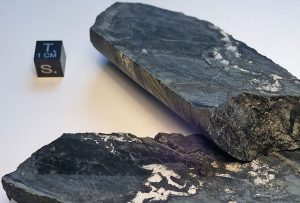The Mystery of a 2 Billion Year Old Nuclear Reactor in Africa

 Imagine finding out that the first nuclear reactor was not built by humans, but by nature itself, two billion years ago.
Imagine finding out that the first nuclear reactor was not built by humans, but by nature itself, two billion years ago.
That’s exactly what happened in 1972, when a team of French scientists analyzed a sample of uranium ore from a mine in Oklo, Gabon, and discovered that it had a lower proportion of uranium-235 than normal.
Uranium-235 is the isotope that can undergo nuclear fission, the process of splitting atoms to release energy. The scientists realized that the only possible explanation for this anomaly was that the uranium ore had been part of a natural nuclear reactor that operated in the distant past.
“After more studies, including on-site examinations, they discovered that the uranium ore had gone through fission on its own,” said Ludovic Ferrière, curator of the rock collection at Vienna’s Natural History Museum, where a part of the curious rock will be presented to the public in 2019. “There was no other explanation.”
How did this natural nuclear reactor work? And what can we learn from it today?
The Oklo reactor was one of 17 natural reactors that formed in a region of Gabon about two billion years ago, when the concentration of uranium-235 in the Earth’s crust was much higher than today.
The reactors were located in a layer of sandstone that contained rich deposits of uranium ore. The sandstone also acted as a natural filter for groundwater, which played a crucial role in moderating the nuclear reaction.
Water is a good moderator because it slows down the neutrons that are released during fission and makes them more likely to cause further fission in other uranium atoms. This creates a chain reaction that sustains the nuclear power generation.
“Like in a man-made light-water nuclear reactor, the fission reactions, without anything to slow down the neutrons, to moderate them, simply stop,” said Peter Woods, team leader in charge of uranium production at the IAEA. “The water acted in Oklo as a moderator, absorbing the neutrons, controlling the chain reaction.”
However, if the water level is too high, it can also absorb too many neutrons and stop the reaction. This is what happened in Oklo, where the groundwater level fluctuated over time, creating a natural feedback mechanism that regulated the reactor’s power output.
The Oklo reactor operated intermittently for hundreds of thousands of years, producing about 100 kilowatts of power, enough to light up 1,000 light bulbs.
The reactor’s power output varied depending on the water level, producing pulses of power every three hours on average. The reactor also generated various radioactive byproducts, such as plutonium, neodymium, ruthenium and xenon.
Some of these byproducts were used as evidence to confirm the existence of the natural reactor, as they matched the expected fission products from a uranium-235 fuel.
The Oklo reactor is not only a incredible example of nature’s ingenuity, but also a valuable source of information for modern nuclear science and engineering. One of the most important lessons we can learn from Oklo is how to safely store nuclear waste for long periods of time.
The radioactive byproducts from the natural reactor have been remarkably well contained within the original ore deposit for two billion years, with minimal leakage or migration to the surrounding environment. This shows that geological formations can provide effective barriers for isolating nuclear waste from the biosphere.
Another lesson we can learn from Oklo is how to design more efficient and sustainable nuclear reactors for the future. The natural reactor had a very high fuel utilization rate, meaning that it extracted most of the energy from the uranium ore before it became depleted.
The natural reactor also had a very low environmental impact, as it did not produce any greenhouse gases or other pollutants. Moreover, the natural reactor was self-regulating and self-stabilizing, without requiring any human intervention or control systems.
The Oklo reactor is a reminder that nature has been experimenting with nuclear energy long before we did, and that we can benefit from studying its secrets and solutions.




